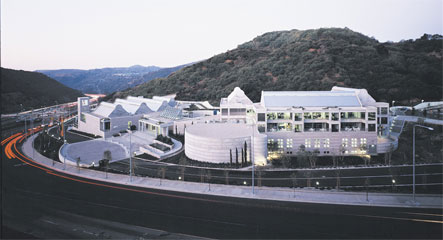Symposium Outline
Date: Saturday, December 17, 2005
Time: 1:00 PM – 5:00 PM
Speakers: Professor Gary T. Horowitz, Professor Anthony Aguirre and Professor John Terning
Location: Skirball Cultural Center, Los Angeles

Click here for directions
The Nature of Space and Time
Professor Gary T. Horowitz
University of California, Santa Barbara
In honor of the hundredth anniversary of Einstein’s “miraculous year” of 1905, the modern view of space and time will be discussed. The discussion starts with special relativity and then follows by how space and time are modified in Einstein’s general theory of relativity. The discussion ends with some recent ideas including black holes in higher dimensions. In all cases, the view of space and time arising from modern physics is radically different from our everyday experience, yet many of their strange properties have already been confirmed by experiment.
Finding a Home in the Multiverse
Professor Anthony Aguirre
University of California, Santa Cruz
The history of cosmology over the past millennium has been that of an ever-widening view of the universe, from Earth surrounded by planets and “crystal spheres” of stars, to a solar system surrounded by thousands of distant stars, then to millions of stars, then to the realization that these millions comprise but one galaxy of millions in the observable universe. Over the past 20 years, several lines of thought have emerged suggesting that the universe may, in fact, be vastly larger yet — it may in fact be a “Multiverse” of uncountable regions as large as all that we can observe, yet potentially with very different properties.
Several lines of reasoning will be discussed — from quantum mechanics, string theory, and observational and theoretical cosmology — that both individually and in conjunction lead us to suspect that we may inhabit some sort of multiverse. Also, the following questions will be addressed: How likely are these different scenarios? How do we describe a mulitverse and what is its structure? Are other universes observable? Are multiverse theories testable, and how can they be tested if we only observe one universe?
Extra Dimensions
Professor John Terning
University of California, Davis
There has been a revolution in our thinking about extra dimensions. A new understanding of the feasibility of localizing four dimensional gauge theories in higher dimensional spacetimes has led to a variety of phenomenologically viable models, and even to the possibility of localizing gravity. Unlike older theories of extra dimensions, much of the focus now is on extra dimensions with sizes on the order of one thousandth of a proton width or larger! Thus, there is a potential for discovery at current and soon-to-be-completed colliders, and in some cases table-top experiments. In addition there are tremendous implications for cosmology. The following topics will be covered:
- Einstein and the Fourth Dimension
- Waves in a Fifth Dimension
- String Theory and Branes
- Experimental Tests of Extra Dimensions
